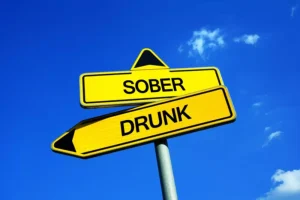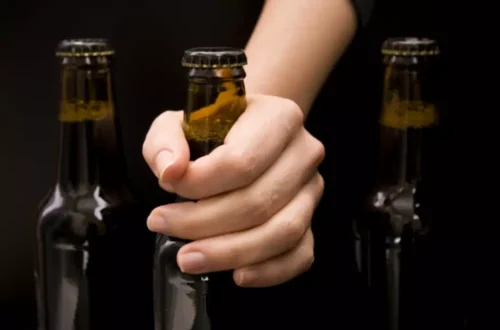
Getting help before your problem drinking progresses to severe alcohol use disorder can save your life. If you think you may have alcohol use disorder, you’re not alone. Realizing you may have an issue is the first step toward getting better, so don’t hesitate to talk to a healthcare provider. They’ll recommend treatments https://ecosoberhouse.com/ and resources to help you recover from alcohol use disorder. People with severe or moderate alcohol use disorder who suddenly stop drinking could develop delirium tremens (DT). It can be life-threatening, causing serious medical issues like seizures and hallucinations that require immediate medical care.
- The classification of alcohols depends on how many alkyl groups are attached to the carbon atom with the OH group.
- The United States Preventive Services Task Force recommends screening adults for unhealthy alcohol use in the primary care setting.
- Brain structures can shift as well, particularly in the frontal lobes, which are key for planning, making decisions, and regulating emotions.
- In the United States, the legal limit for driving under the influence of alcohol is 0.08 percent, except in the state of Utah, where it’s 0.05 percent.
- An intervention from loved ones can help some people recognize and accept that they need professional help.
- Alcoholics Anonymous is a decades-old treatment, but one that research shows is effective.
- Alcohol use disorder can cause serious and lasting damage to your liver.
The Healthcare Professional’s Core Resource on Alcohol from NIAAA
People assigned female at birth (AFAB) should limit drinking to one drink a day. Heavy drinking in this population is four or more drinks a day or alcoholism eight drinks a week. Therapy is useful to help teach someone how to manage the stress of recovery and the skills needed to prevent a relapse.

What Increases the Risk for Alcohol Use Disorder?
If you are drinking more than that at any one time, you may be misusing alcohol. Excessive drinking is defined as 15 drinks or more a week for men and eight drinks or more a week for women. Over the long or medium term, excessive drinking can significantly alter the levels of these brain chemicals. This causes the body to crave alcohol to feel good and avoid feeling bad.

What is considered 1 drink?
These complications are reasons why it’s important to treat alcohol addiction early. Nearly all risks involved with alcohol addiction may be avoidable or treatable, with successful long-term recovery. Regardless of how the addiction looks, someone typically has an alcohol addiction if they heavily rely on drinking and can’t stay sober for an extended period of time. Some people may be hesitant to seek treatment because they don’t want to abstain entirely. Moderation management or moderation treatment can be an effective approach, in which people learn responsible drinking habits through a structured program. Research suggests this form of treatment can help people shift from heavy to moderate drinking, improve quality of life, and enhance emotional well-being.
- Treatment for alcoholism often involves a combination of therapy, medication, and support.
- Severity is based on the number of criteria a person meets based on their symptoms—mild (2–۳ criteria), moderate (4–۵ criteria), or severe (6 or more criteria).
- Discover why personalized treatment plans are crucial for overcoming substance use disorders.
- U.S. alcohol guidelines are changing as health concerns increase.
- As anyone who has had even a glass of wine can attest, alcohol can have a noticeable influence on mood.
Treatment for AUD may be lifelong and include counseling, support groups, residential programs, and medications. Regular heavy drinking can seriously affect a person’s ability to coordinate their muscles and speak properly. In the brain, levels of the neurotransmitter dopamine rise after consuming alcohol. These heightened dopamine levels may make the drinking experience more gratifying. Alcohol dependence develops over time and can disrupt the balance of gamma-aminobutyric acid (GABA) in the brain and glutamate.
Diagnosing alcohol use disorder
According to the NIAAA, symptoms may include trouble sleeping, restlessness, nausea, sweating, a racing heart, increased blood pressure, tremor (or shakiness), anxiety, feeling low, or just a general sense of malaise. Moderate and severe withdrawal syndromes can include hallucinations, seizures, or delirium tremens; the latter two can be life-threatening. The chance of developing any health problem is related to the genetic code we are born with. Just like some people have a greater risk of developing cardiovascular disease or cancer, others have a greater risk of developing an alcohol use disorder. Heavy alcohol use is binge drinking on five or more days within the past month, or consuming more than seven drinks per week for women and more than 14 drinks per week for men. Alcoholism is a treatable disease, with many treatment programs and approaches available to support alcoholics who have decided to get help.
- The American Medical Association recommends a two-drink daily limit for people assigned male at birth (AMAB).
- The diagnosis of AUD is established using the criteria in the DSM-V.
Alcoholism Short & Long-Term Physical Health Issues

Tertiary alcohols only undergo SN1 reactions; secondary alcohols can undergo SN1 reactions but with a slow rate and thus generally prefer to undergo SN2 reactions; primary alcohols only undergo SN2 reactions. Alcohol use disorder can cause serious and lasting damage to your liver. When you drink too much, your liver has a harder time filtering the alcohol and other toxins from your bloodstream.
Types of Alcohols
Don’t forget to take care of yourself, too; consider seeking out your systems of support or even medical help if you’re having trouble. Undergoing treatment for AUD can be challenging, and there’s always a risk of relapse. Making such a significant life change can cause emotional turmoil, including guilt for past behaviors or burdening others. Having support and seeking professional treatment increases the chances for recovery from AUD. Groups such as Alcoholics Anonymous (AA) provide support for people who are recovering. Treatment of AUD focuses on relieving symptoms of alcohol withdrawal in the short term and then suppressing alcohol cravings in the long term.

